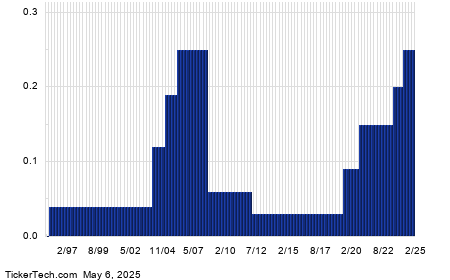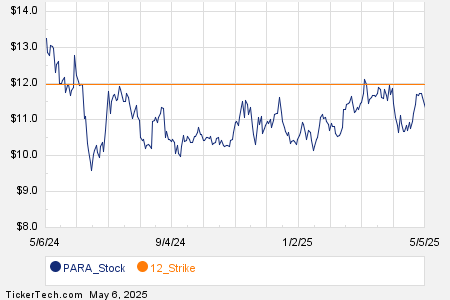US Dollar Weakens Following Record Trade Deficit Concerns
The dollar index (DXY00) fell by -0.49% today. This decline is driven by worries that US trade policies could lead to economic stagflation. The dollar’s losses intensified after the US March trade deficit widened to a record high, which could negatively impact Q1 GDP.
The US March trade deficit reached -$140.5 billion, exceeding expectations of -$137.2 billion, representing a significant strain on Q1 GDP.
The market anticipates only a 2% chance for a -25 basis point rate cut after the conclusion of Wednesday’s 2-day FOMC meeting.
Euro Gains Amid Weak Dollar and Economic Data
EUR/USD (^EURUSD) increased by +0.29% as the euro benefitted from a weaker dollar. Additionally, today’s upward revision of the Eurozone April S&P composite PMI contributes positively to the euro. However, gains remain limited due to underwhelming Eurozone March PPI data, which is seen as dovish for European Central Bank (ECB) policy. Moreover, political instability in Germany, following Fredrich Merz’s failure to obtain parliamentary backing for the chancellorship, also negatively impacts the euro.
Eurozone March PPI decreased by -1.6% month-over-month and rose +1.9% year-over-year, which was below expectations of -1.4% month-over-month and +2.5% year-over-year.
The Eurozone April S&P composite PMI has been revised upward by +0.3 points to 50.4, from the initially reported 50.1.
Political Turmoil in Germany Affects Eurozone Stability
In a notable sign of political instability, Fredrich Merz failed to secure enough votes in a parliamentary vote, marking the first instance since World War II that an incoming chancellor did not gain a majority in the Bundestag’s initial vote.
Market swaps show a 96% likelihood of a -25 basis point rate cut by the ECB during the June 5 policy meeting.
Safe-Haven Demand Boosts Yen and Precious Metals
USD/JPY (^USDJPY) decreased by -0.68%, as the yen appreciated against the dollar amid rising safe-haven demand due to weakness in US stocks driven by trade concerns. Despite this, rising T-note yields have capped further gains for the yen. Movements today may be more pronounced with Japanese markets closed for a holiday.
In precious metals, June gold (GCM25) rose by +80.30 (+2.42%), while July silver (SIN25) increased by +0.941 (+2.90%). Precious metals surged significantly today, with gold reaching a two-week high and silver a one-week high. The weaker dollar has promoted higher metal prices. Ongoing global trade tensions from US tariff policies have also bolstered demand for safe-haven assets.
Increased inflation expectations contributed to the demand for precious metals as a hedge, with today’s 10-year breakeven inflation rate hitting a one-week peak. Additionally, lower T-note yields today support precious metals prices. Geopolitical tensions in the Middle East continue to drive safe-haven demand, with conflicts involving Israel, Hamas, and the US-Houthi dynamics intensifying. Recently, Israel conducted airstrikes on Houthi targets in Yemen’s capital, Sanaa, following a missile strike against Israel.
On the date of publication, Rich Asplund did not hold (either directly or indirectly) positions in any securities mentioned in this article. All information and data are for informational purposes only. For more details, please view the Barchart Disclosure Policy here.
The views and opinions expressed herein are those of the author and do not necessarily reflect those of Nasdaq, Inc.

